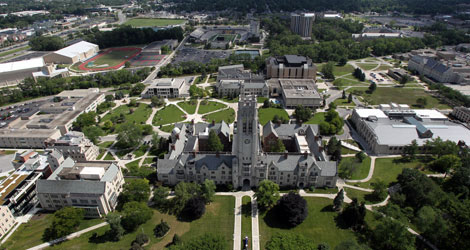The structure and levels of education in the United States
School education starts in the US in 5-6 years and lasts 12 years. Basic information about school education in the USA can be found here.
After school, the U.S. education system offers several options for further studies: in the biennial community college or four-year College of higher education.
After two years of teaching in the community college student receives a professional degree Associate''s degree of one of two types:
- professional AD that allows you to work in Junior positions in offices, in manufacturing, in medicine, but not credited for admission to the University. As a rule, the degree of associate of applied science degrees. Some community colleges give students the diplomas and certificates of completion, which most likely also will not be counted by the University as part of undergraduate programs.
- academic AD - actually replaces the first two years of the undergraduate programs is recorded as an Associate of Arts or Associate of Science.
Doing a four-year College of higher education, the student moves to a new level in the American system of education - higher education.
The higher education system in the US consists of three stages:
The first level unergraduate: undergraduate. During the first two years at undergraduate students receive General education and specialization, a major, selected at the 3rd year of study. Specialization is a block of items needed for the acquisition of a certain profession. However, the uniqueness of the American educational system is that specialization can be changed several times during the training - although this will often require additional training time and costs.
The second level - graduate: masters. As a rule, in the U.S. a master's degree given to those who are planning to build a research career and a career in psychology, education, engineering. A significant part of the judiciary - training program consisting of classroom and independent work and the final writing of the thesis - call it “master's thesis” or “master's project”.
The third level is postgraduate: postgraduate. To this level, the student prepares a master's degree, but also, it can immediately enter the program leading to the PhD degree, earning a master's degree in the learning process as an intermediate. The PhD degree is awarded after defence of a thesis.
All of these levels of education in the United States comply with the European educational levels. About the relative and the different system of education in the United States and Russia, read here.
The educational system in the US is quite unusual also from the point of view of assessment of student work.
The most important for the higher education system of the USA the concept are transcripts of academic hours or credits. Each module that students enrolled in any of the three levels of higher education in the U.S., is “worth” a certain number of credit hours. Approximately it corresponds to the number of hours per week that the student spends in the classroom. Usually it is 3-5 hours per week in each subject. The program is a full day usually includes 12-15 credit hours a week studying 4-5 subjects per semester. Read more about the system of credit hours here.
The education system in America is characterized by high flexibility and variability in what attracts students from around the world.















